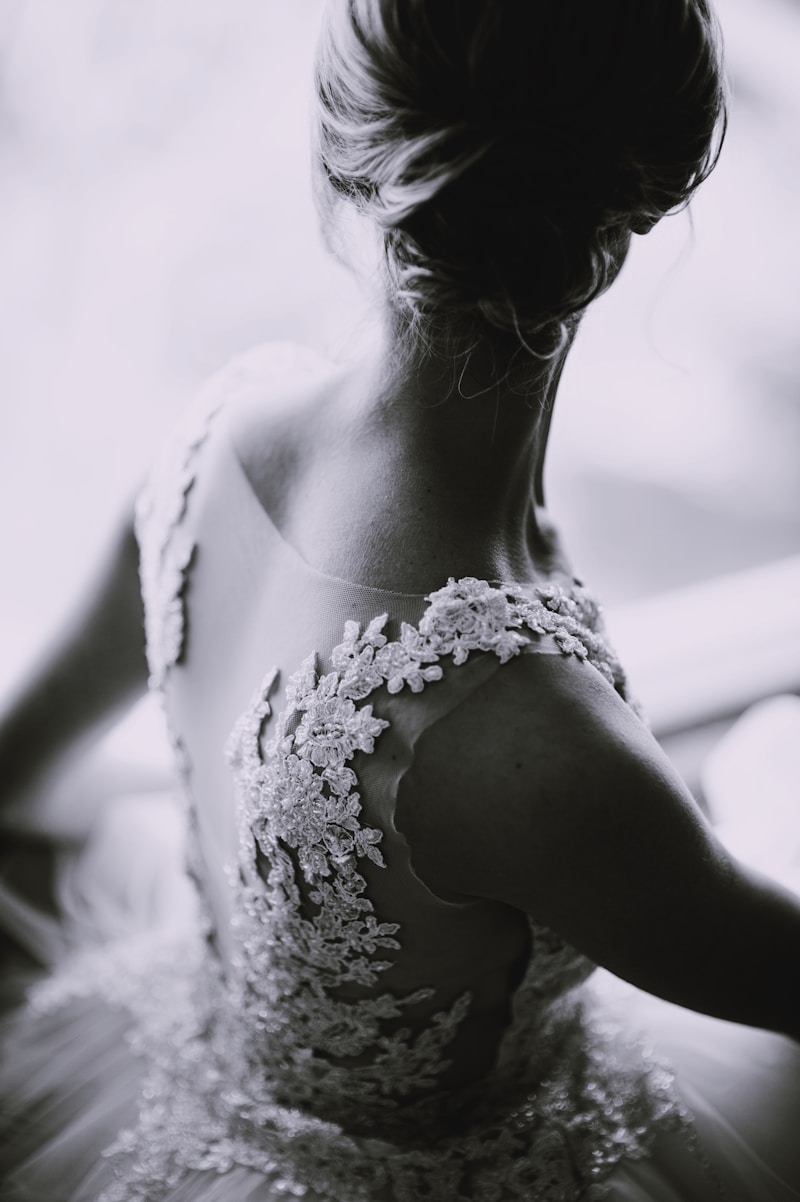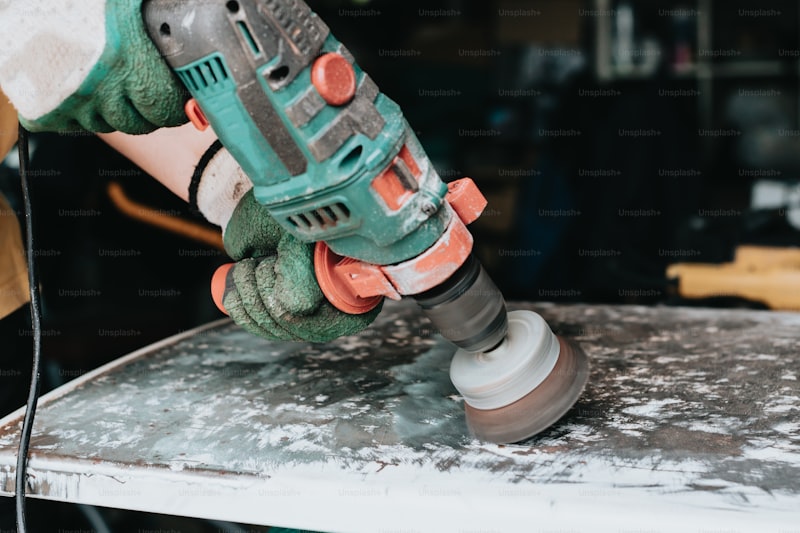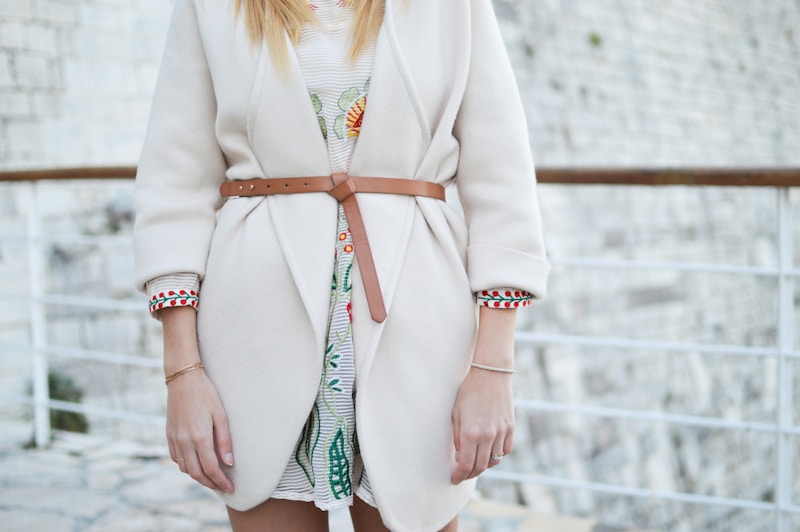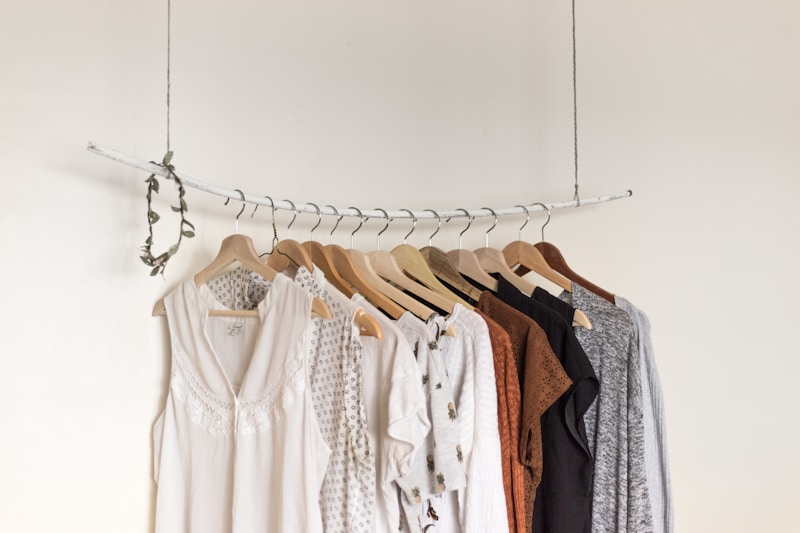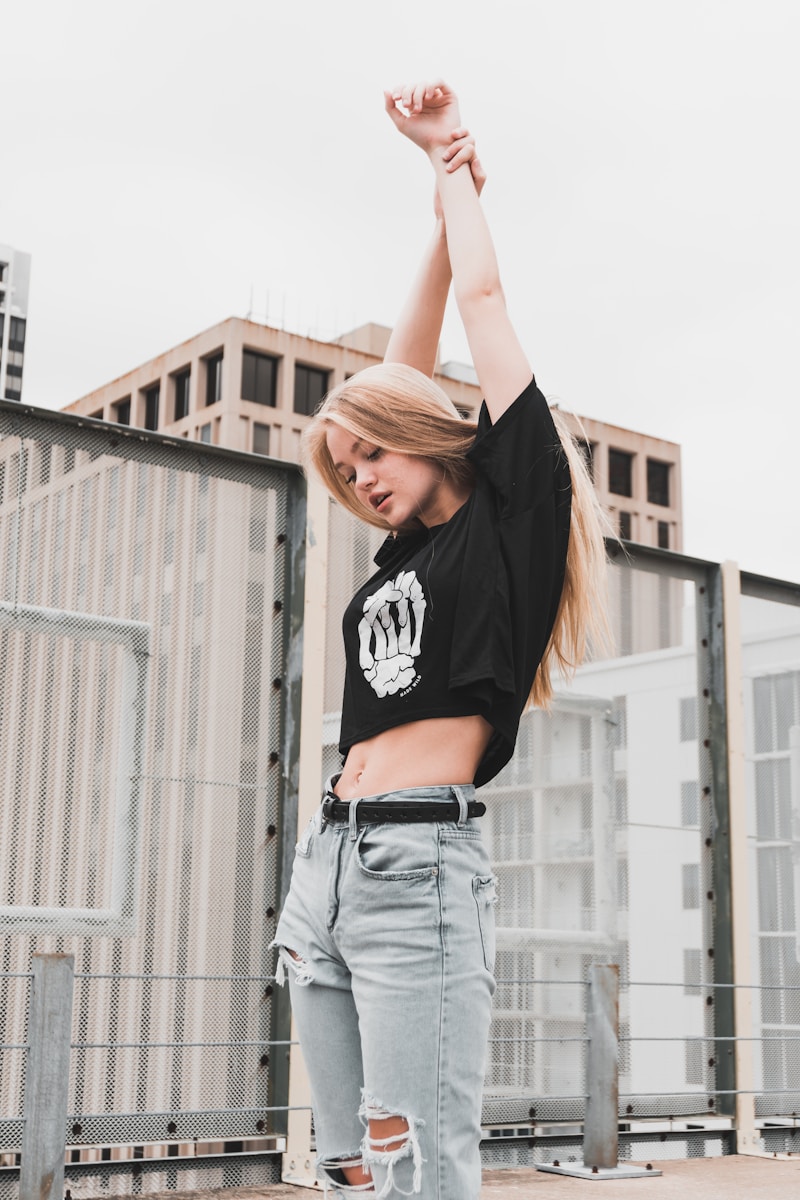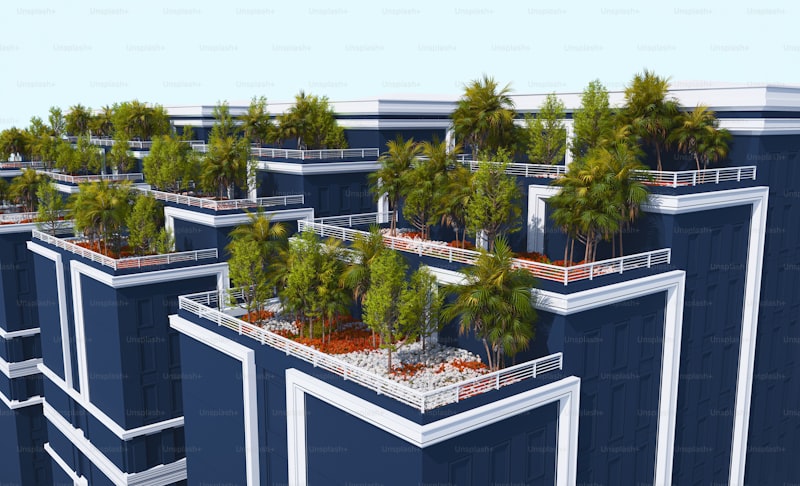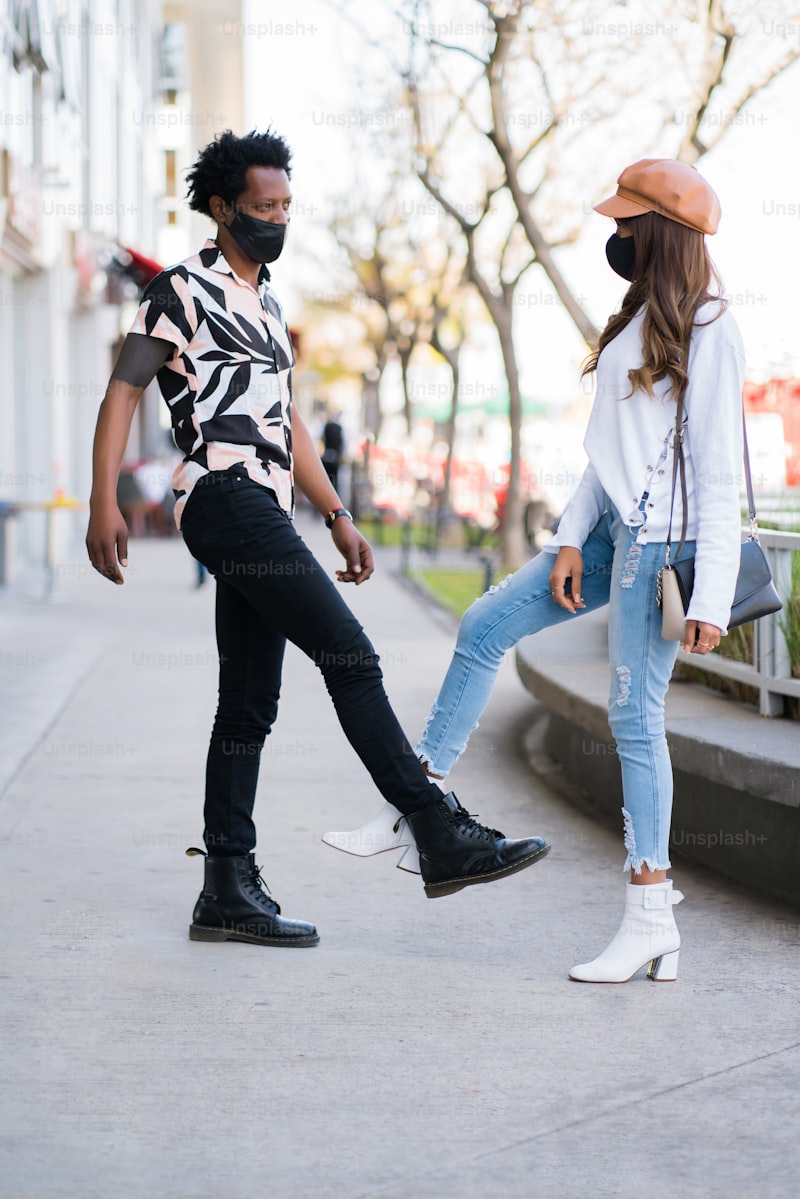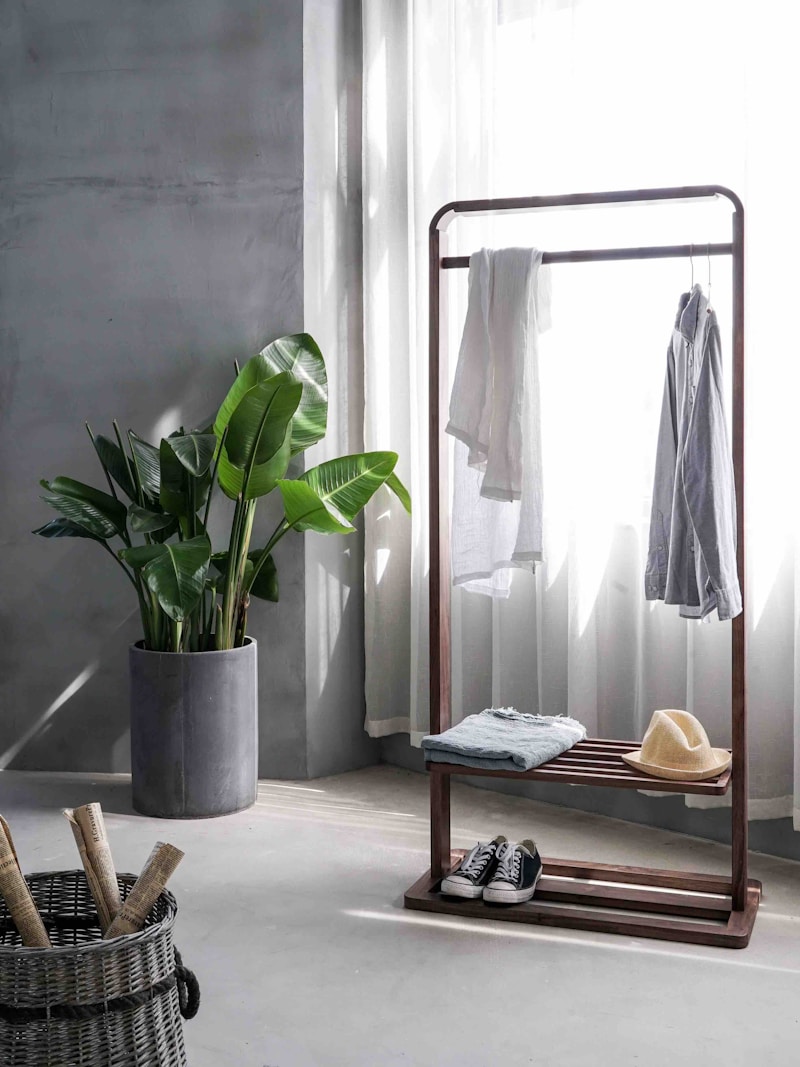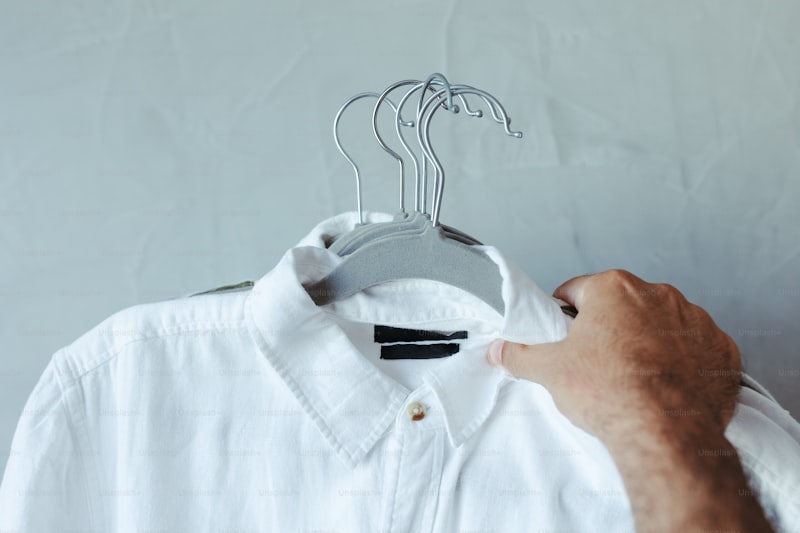Fashion Forward Trends: Embrace the Future of Style
The world of fashion is ever-evolving, consistently influenced by cultural shifts, technological innovations, and emerging designers. In this article, we will explore the latest Fashion Forward Trends that are shaping the industry today. We will delve into what these trends mean, how they affect consumers, and highlight some prominent figures who are leading the charge in modern fashion.Understanding Fashion Forward TrendsFashion forward trends represent the cutting edge of style, often before they reach mass appeal. These are not merely trends that fill the runways but are indicative of broader societal changes and innovations. These trends bridge the gap between avant-garde ideas and wearable designs, pushing the boundaries of what fashion can represent.Key Fashion Forward Trends to WatchTrendDescriptionImpact on ConsumerSustainable FashionFashion items made from eco-friendly materials and ethical production practices.Growing consumer awareness leads to a demand for environmentally responsible products.Tech-Enhanced ClothingWearable technology that incorporates electronics into clothing, such as smart fabrics.Increased functionality and innovation, allowing consumers for personalized experiences.Gender FluidityFashion breaking traditional gender norms, embracing all gender identities.Consumers are more open to exploring diverse styles that express their identity.Heritage CraftsmanshipRevival of traditional methods and artisanal skills to create unique pieces.Consumers value...
Cultural Influences: Understanding Their Role in Global Society
Unveiling Cultural Influences in Our LivesCultural influences play a significant role in shaping societies and individuals alike. They encompass traditions, beliefs, art forms, and social behaviors that evolve over time and differ from one community to another. In this article, we will explore the myriad ways cultural influences manifest in our daily lives, their historical roots, and how they impact global interactions.The Definition and Importance of Cultural InfluencesCultural influences refer to the ways in which the norms, values, and beliefs of a particular group affect individuals within that society. These influences can include everything from language, religion, and food to music, fashion, and art. Understanding cultural influences is crucial not only for personal growth and identity but also for fostering global communication and cooperation.Historical Context of Cultural InfluencesCultures are not static; they evolve as societies change and interact. Historically, cultural exchanges were often prompted by trade, migration, and conquest, leading to the blending of traditions and practices. For example, the Silk Road facilitated the sharing of cultural influences between East and West, introducing concepts such as Buddhism to China and Persian art to Europe.Modern Examples of Cultural InfluencesIn today’s globalized world, cultural influences are more pronounced than ever. The spread of the internet and social media has accelerated the exchange of cultural ideas acr...
Unlocking the Art of Bespoke Creations: Tailored Artistry for Every Occasion
Introduction to Bespoke CreationsBespoke creations are a testament to individuality and artistry, allowing people to express their unique tastes and preferences. From tailored clothing to custom furniture, these one-of-a-kind items offer a personalized touch that mass-produced products simply cannot match. In this article, we will explore the captivating world of bespoke creations, discussing their benefits, common forms, and what to consider when commissioning such personalized items.What Are Bespoke Creations?The term "bespoke" is most commonly associated with fashion, where it refers to clothing made to an individual's specifications. However, bespoke creations extend far beyond just apparel. Essentially, anything crafted to meet a client's specific desires can be considered a bespoke creation. This can include: Custom Clothing: Suits, dresses, and other apparel tailored to fit your body and style perfectly. Furniture: Unique pieces designed to complement the aesthetics of your home. Jewelry: Personalized accessories that reflect personal sentiments or milestones. Artwork: Paintings or sculptures created specifically for an individual’s tastes or space.Benefits of Choosing Bespoke CreationsInvesting in bespoke creations offers numerous advantages. Here are some of the primary benefits:PersonalizationEvery detail is customizable, ensuring that the final product aligns perfectly with your vision.QualityTypically crafted with superior materials, bespoke items often boast ...
The Ultimate Guide to Wedding Theme Cohesiveness
Understanding Wedding Theme CohesivenessPlanning a wedding can be a thrilling yet overwhelming experience for couples. One of the most significant aspects to consider is wedding theme cohesiveness. This concept refers to the unity and consistency of design elements across various facets of the wedding, from invitations and decorations to the attire and venue. Achieving cohesiveness not only enhances the aesthetic appeal of the event but also creates a memorable experience for the guests. This comprehensive guide will delve into the importance of wedding theme cohesiveness, how to achieve it, and tips to keep it in mind while planning.Why is Wedding Theme Cohesiveness Important?Wedding theme cohesiveness plays a critical role in how your big day is perceived. It impacts guests' experiences and leaves a lasting impression. Here are some reasons why it's essential:Visual Appeal: A cohesive theme enhances the overall beauty of the wedding.Guest Experience: When the theme flows seamlessly, guests feel more immersed in the celebration.Personal Touch: A well-thought-out theme reflects the couple's personality and love story.Photographic Opportunities: Cohesive themes provide stunning backdrops for pictures, making them more memorable.Elements of Wedding Theme CohesivenessTo achieve perfect cohesiveness, several elements should harmonize throughout the wedding. Below are key components to consider:ElementDescriptionColor PaletteSelect a consistent color scheme that complements your l...
Mastering Timely Modifications for Enhanced Efficiency
Understanding Timely Modifications in Today’s Rapidly Changing EnvironmentIn the dynamic landscape of modern business, timely modifications have become essential for staying competitive. This article delves into the importance of timely modifications, their benefits, and how they can be effectively implemented across various sectors.What Are Timely Modifications?Timely modifications refer to the necessary adjustments made to processes, strategies, or products to adapt to changes in the environment, market conditions, or consumer preferences. These modifications are crucial across all industries, including technology, healthcare, finance, and retail.Why Are Timely Modifications Important?Companies that embrace timely modifications can enjoy numerous advantages. Here are some compelling reasons: Staying Relevant: As trends and technologies evolve, businesses that adapt are more likely to remain relevant. Competitive Advantage: Quick modifications allow businesses to outpace competitors who may be slow to adapt. Improved Customer Satisfaction: Responding to customer feedback in a timely manner fosters loyalty and trust.The Impact of Timely Modifications on Various Industries Industry Examples of Timely Modifications Technology Adapting software based on user feedback Healthcare Implementation of new medical protocols during a health crisis Finance Updating financial products to meet chan...
Mastering 'Attention to Detail': Why It Matters and How to Cultivate It
Understanding 'Attention to Detail''Attention to Detail' is a crucial skill that transcends industries and roles. It involves the ability to focus on the nuances and small elements of any task, ensuring precision and quality in work. Whether in professional settings or daily tasks, mastering this skill can lead to higher levels of efficiency, productivity, and overall success.What is 'Attention to Detail'?'Attention to Detail' refers to the conscientiousness employed in maintaining thoroughness and accuracy in work. This skill is essential for a wide range of professions, from accounting to coding, interior design, and customer service. An individual who possesses a strong focus on detail is often seen as meticulous, focused, and dedicated, traits that are highly valued in the workplace.Why is 'Attention to Detail' Important?IndustryImportance of Attention to DetailHealthcareEnsures accurate patient records and medication administration.FinanceReduces risks of financial errors and increases trust.Real EstateHelps in thorough property assessments and contract accuracy.TechnologyCritical in software development and QA to avoid bugs.MarketingEnsures campaigns are aligned with brand messaging and target audience.Benefits of Cultivating 'Attention to Detail'Enhancing your attention to detail can yield numerous benefits:Improved Quality of Work: A focus on details often leads to higher quality outcomes.Better Time Management: By avoiding mistakes, you can save time spent on revisio...
Understanding Gown Length Preferences: A Comprehensive Guide
Introduction to Gown Length PreferencesChoosing the perfect gown is an exciting yet challenging task for many individuals, especially when it comes to determining the right length. Gown length preferences vary based on personal style, occasion, and body type. In this article, we will delve into the various gown lengths available, the preferences associated with each, and how these factors can influence your selection. We will also address some common questions related to gown lengths and provide you with insights to make informed choices.Types of Gown LengthsWhen it comes to gown length, there are several options available, each serving different purposes and appealing to various tastes. Below are the most common gown lengths:Length TypeDescriptionBest ForA-Line GownFitted to the waist and flares out to the hem.All body typesShort GownTypically falls above the knee.Casual events and summer partiesTea-Length GownHits between the knee and ankle.Vintage style and semi-formal eventsFull-Length GownExtends to the floor, offering a formal appearance.Weddings and formal galasMidi GownFalls mid-calf, blending casual with elegance.Day events and brunchFactors Influencing Gown Length PreferencesThere are several factors that influence gown length preferences. Here are some key considerations:1. OccasionThe occasion is perhaps the most significant factor in determining gown length. Formal events generally call for full-length gowns, such as gowns worn for weddings, award ceremonies, or ...
The Reflection of Personality: Understanding Ourselves Through Our Choices
Introduction to the Reflection of PersonalityThe concept of personality has fascinated humans for centuries. Our personality influences our behavior, decisions, and interactions with others. One intriguing aspect of personality is how it reflects in our daily lives—from our fashion choices to the way we communicate. In this article, we will explore the reflection of personality in various contexts and provide insights into how understanding this concept can lead to personal growth.Understanding PersonalityBefore delving into how personality reflects in our lives, it is crucial to understand what personality is. Personality refers to the combination of characteristics or qualities that form an individual's distinctive character. Psychologists often categorize personality traits using various theories, such as the Big Five Personality Traits: Openness, Conscientiousness, Extraversion, Agreeableness, and Neuroticism.The Role of Personality in Our LivesYour personality can significantly influence multiple aspects of your life. It impacts your relationships, career choices, and even your mental health. By understanding your personality, you can enhance your strengths and work on your weaknesses. In this section, we will discuss different areas where your personality is reflected and how you can interpret these reflections.Area of ReflectionExamplesInterpretationFashion ChoicesColor preferences, style of clothesBold colors may indicate an extroverted personality, while muted colors...
The Art and Science of Mixing Fabrics: A Comprehensive Guide
Understanding the Dynamics of Mixing FabricsMixing fabrics is an essential skill for anyone involved in fashion design, home decor, or crafting. The ability to blend different materials can elevate the aesthetic appeal of a project, enhance texture, and achieve a unique look. In this article, we will explore the principles of mixing fabrics, the various types of fabrics you can combine, and tips to create harmonious and visually appealing compositions.The Importance of Fabric SelectionWhen it comes to mixing fabrics, the first step is understanding the properties of different materials. Each fabric type brings its own texture, weight, and drape, which can influence the final outcome of your project. Here are some popular fabric types and their characteristics:Fabric TypeCharacteristicsBest UsesCottonBreathable, soft, and easy to sewT-shirts, dresses, home textilesSilkLuxurious, smooth, and lightweightEvening gowns, scarves, lingerieLinenTextured, absorbent, and breathableSummer clothing, tablecloths, curtainsWoolWarm, durable, and elasticCoats, sweaters, blanketsPolyesterStrong, wrinkle-resistant, and versatileSportswear, upholstery, costumesPrinciples of Mixing FabricsSuccessful fabric mixing is not just about choosing different fabrics; it requires a keen eye for balance and harmony. Here are some guiding principles to help you mix fabrics effectively:1. Consider Color and PatternThe combination of colors and patterns can significantly impact the overall look of your projec...
Mastering Styling for Different Venues: A Comprehensive Guide
When it comes to styling for different venues, understanding the nuances of each setting is crucial for making a lasting impression. Whether you are preparing for a beach wedding, a corporate event, or an upscale gala, the right aesthetic can elevate your experience. This article will dissect various types of venues, providing practical tips and insights to help you style for different occasions, ensuring that you are always dressed to impress.Understanding the Importance of Venue-Specific StylingDifferent venues carry distinct atmospheres and expectations. Styling appropriately not only demonstrates respect for the event but also showcases your personal style in the best light. It's crucial to understand the cultural, social, and environmental factors that influence these styles. Below, we categorize common venues and provide tailored styling advice for each.Popular Venue Types and Their Styling RequirementsVenue TypeStyling FactorsRecommended StylesBeach WeddingsCasual, Comfortable, Weather-FriendlyLight fabrics, sandals, floral printsCorporate EventsProfessional, Polished, Industry-AppropriateSuit for men, business attire for women, conservative colorsFormal GalasElegant, Sophisticated, Attention to DetailEvening gowns, tuxedos, statement jewelryOutdoor FestivalsFun, Colorful, PracticalComfortable shoes, layered outfits, vibrant colorsCountry ClubsRefined, Classy, Semi-FormalBlazers, tailored dresses, and dress shoesStyling Tips for Specific VenuesLet's explore each venue ...
Sustainable Fashion Choices: Making a Positive Impact on the Environment
Understanding Sustainable Fashion Choices In recent years, the fashion industry has come under scrutiny for its environmental impact. As consumers become increasingly aware of the implications of their purchases, the demand for sustainable fashion choices has surged. But what exactly does sustainable fashion mean? In this article, we’ll explore sustainable fashion choices, their benefits, and how you can incorporate them into your wardrobe.What is Sustainable Fashion? Sustainable fashion refers to clothing and accessories produced with minimal negative impact on the environment and society. This involves the use of eco-friendly materials, ethical production practices, and a focus on sustainability throughout the entire supply chain. Sustainable fashion seeks to create a system that can be supported indefinitely in terms of human impact on the environment and social responsibility.The Importance of Sustainable Fashion Choices The environmental footprints of traditional fashion practices are vast, contributing to significant pollution, waste, and other ecological concerns. According to studies, the fashion industry is responsible for about 10% of global carbon emissions. This alarming statistic emphasizes the urgent need for sustainable fashion choices. Here are some reasons why opting for sustainable fashion is vital: Reduction of Waste: Traditional fashion practices contribute to a staggering amount of waste, with millions of tons of clothing ending up in landfills each...
The Impact of Celebrity Influence on Styles: A Comprehensive Analysis
In today’s digital age, the way we perceive fashion and lifestyle trends has been heavily influenced by celebrities. From red carpet appearances to social media posts, celebrities set the stage for what's considered stylish and trendy. This article explores the multifaceted influence of celebrities on styles, how they shape consumer behavior, and the implications for the fashion industry.Understanding Celebrity InfluenceCelebrity influence refers to the way in which public figures impact the choices and preferences of their followers. This influence is particularly significant in the realms of fashion and style. Celebrities often serve as tastemakers, and their endorsements can dictate what is trendy.How Celebrities Shape TrendsMany people look to celebrities for fashion inspiration. They often showcase new styles and trends at significant events, such as film premieres, award shows, and fashion weeks. Social media platforms like Instagram and TikTok have further amplified this influence, allowing celebrities to reach millions with a single post.The Role of Social MediaSocial media has transformed the fashion landscape, allowing celebrities to connect directly with their fans. Platforms like Instagram and TikTok enable them to share outfits, makeup tutorials, and lifestyle tips in real-time. This accessibility makes celebrity styles more relatable and aspirational for the average consumer.PlatformInfluenceExamplesInstagramDirect engagement with fansKylie Jenner’s makeup line ...
Mastering Layering Techniques: Transform Your Style and Look
Introduction to Layering TechniquesLayering techniques have become a staple in fashion, home decor, and even cooking. The art of layering allows you to maximize style, texture, and visual appeal, creating a fascinating dimension to your appearance or environment. In this piece, we will explore various aspects of layering techniques, discussing their significance, practical applications, tips for effective implementation, and frequently asked questions!What Are Layering Techniques?Layering techniques refer to the method of combining multiple items or elements in a way that enhances the overall aesthetic. This could be clothing layers piled on one another for an appealing outfit, layering different materials in interior design, or even stacking flavors in a gourmet meal! Regardless of the context, the objective remains the same: to create depth, interest, and harmony.Layering Techniques in FashionWhen discussing layering techniques, fashion is often the first example that comes to mind. The art of layering can significantly elevate an outfit, making it suitable for various occasions. Here are several essential layering techniques in fashion:1. The Basic LayerThe first step in mastering layering techniques is starting with a basic layer, usually made up of a fitted or neutral-colored top. This layer serves as a foundation and can be easily combined with other pieces.2. The Middle LayerThe middle layer adds warmth and texture. This could be a sweater, cardigan, or jacket. Conside...
Unlocking the Power of Emotional Connection to Style
Understanding the Emotional Connection to Style In today's fast-paced world, the way we present ourselves through fashion and style speaks volumes about our personalities and emotions. The concept of "Emotional Connection to Style" goes beyond mere aesthetics—it encompasses how our clothing choices resonate with our inner feelings and how they communicate to the world. The Essence of Style Style is often seen as a reflection of individuality. It holds the power to evoke emotions and build connections between the wearer and the observer. The fabrics we choose, the colors we wear, and the accessories we select express our identity, values, and even our mood. Understanding this emotional connection can empower individuals to curate a wardrobe that not only looks great but also resonates with who they are. Why Emotional Connection Matters When we dress, we often choose outfits that align with how we feel or aspire to feel. For instance, someone might wear vibrant colors on a day they feel optimistic, while darker hues may reflect a more somber mood. This is where the emotional connection to style manifests. EmotionStyle ChoicesHappinessBright colors, playful patternsConfidenceTailored clothing, bold accessoriesComfortCasuall wear, soft fabricsNostalgiaVintage styles, classic pieces The Role of Fashion Icons Fashion icons play a significant role in shaping our emotional connection to style. Celebrities such as Rihanna or David Beckham have transformed how we perceive fas...
Transformative Designs: Revolutionizing Spaces and Experiences
Understanding Transformative DesignsIn the ever-evolving world of architecture and interior design, transformative designs have emerged as a remarkable trend, reshaping not only physical spaces but also the way we interact with our environments. This innovative approach emphasizes adaptability, sustainability, and user-centered methodologies, creating spaces that cater to various needs and preferences. Whether it's a residential property, commercial establishment, or public space, transformative designs enhance functionality while offering aesthetic appeal.The Core Principles of Transformative DesignsTransformative designs are built on several core principles that guide architects and designers in creating meaningful experiences: Flexibility: Spaces should be designed to adapt to different uses and user requirements, allowing for frequent modifications to suit evolving needs. Sustainability: Integrating eco-friendly materials and energy-efficient technology to minimize environmental impact. User-Centric Approach: Involving end-users in the design process to ensure their needs and preferences are met. Community Focus: Creating spaces that foster community interaction and connectivity among users.Key Elements of Transformative DesignsSeveral critical elements contribute to the effectiveness of transformative designs:ElementDescriptionModularityCreating spaces that can be easily reconfigured or repurposed.Biophilic DesignIncorporating natural elements to enhance well...
Unlocking Creativity: Exploring the Power of Playful Elements in Design
In today’s fast-paced world, the importance of creativity cannot be overstated. Whether we are designing a marketing strategy, engaging in graphic design, or formulating product development ideas, playful elements often provide the spark that fosters innovation. This article will delve deep into what playful elements are, their significance in various fields, and how they can be effectively integrated into your work.What Are Playful Elements?Playful elements refer to aspects of design and interaction that invoke joy, curiosity, and creativity. These can be simple visual features, unconventional layouts, quirky animations, or even the language used in branding. When infused adequately, playful elements not only capture attention but also provide a memorable experience for the user.The Origins of Playful Elements in DesignThe concept of playfulness in design isn't novel. It draws from various disciplines, including psychology, education, and user experience design. The idea is grounded in the belief that play fosters learning and creativity. According to educational theorist Johan Huizinga, play is a vital aspect of culture and society, stimulating innovation and personal growth.Benefits of Playful ElementsExamplesEnhances User EngagementInteractive animations on websitesStimulates CreativityGamified learning experiencesBuilds Emotional ConnectionQuirky branding elementsPromotes Problem-SolvingDesign thinking workshops with playful activitiesImportance of Playful Elements in Va...
Styling for Unique Personalities: Discover Your Personal Style
Understanding Personal StyleIn today's world of fashion, the concept of personal style has evolved significantly. It's no longer about following trends; it's about expressing individual personalities through unique clothing choices. Whether you're flamboyant, minimalist, or eclectic, styling for unique personalities allows you to showcase who you truly are. This article will explore various ways to develop a personal style that resonates with your unique personality, along with tips, tricks, and suggestions. Why Personal Style MattersPersonal style is essential for several reasons: Self-Expression: Your clothing can express your inner self and make you feel confident. First Impressions: People often judge others based on their appearances, making style important for first impressions. Cultural Identity: Clothing can reflect your culture and heritage, adding a layer of depth to your personal style.Identifying Your Personality TypeThe first step in styling for unique personalities is to understand what personality type resonates with you. Multiple frameworks exist, such as the Myers-Briggs Type Indicator (MBTI) or even astrology. Here’s a brief overview of personality types related to style:Personality TypeStyle CharacteristicsCreativeBold colors, mixed patterns, and unconventional accessories.ClassicTimeless pieces, neutral colors, and elegant silhouettes.EclecticA mix of styles, bright colors, and unique vintage finds.MinimalistSimplistic designs, neutral palette, an...
Exploring Transitional Styles: Bridging Tradition and Modernity in Design
In the world of design, whether it be interior design, fashion, or architecture, Transitional Styles play an essential role in combining the best elements of traditional and contemporary aesthetics. This article will delve into the characteristics, benefits, and considerations of transitional styles, providing insights for anyone looking to blend these two design philosophies seamlessly.What Are Transitional Styles?Transitional styles are a design approach that harmoniously merges traditional and modern elements. The aim is to create a balanced and comfortable environment that respects classic forms while embracing contemporary sensibilities. Transitional design is evident in various fields, including home decor, clothing, and even graphic design.Characteristics of Transitional StylesTransitional styles are defined by several key characteristics: Neutral Color Palettes: Most transitional spaces utilize a neutral color scheme, featuring shades like beige, gray, and taupe with pops of color for emphasis. Mix of Textures: A variety of textures, such as smooth fabrics, rough wood, and metal finishes, combine to enhance visual interest without overwhelming the senses. Streamlined Furniture: Furniture in transitional design typically features clean lines and simple shapes, avoiding overly ornate details from traditional styles. Classic Patterns with Modern Twist: While traditional patterns like florals or stripes are used, they are often presented in more contemporary colors or...
Transcending Trends: How to Stay Ahead in a Rapidly Changing World
Introduction to Transcending TrendsIn today’s fast-paced society, trends come and go with astounding rapidity. From fashion and technology to business practices, keeping up can feel like a challenge. Yet, some individuals and organizations have managed to transcend these fleeting trends, establishing lasting influence and integrity. This article delves into the concept of "Transcending Trends," exploring how to cultivate a mindset that not only adapts to change but also remains resilient in the face of evolving circumstances.What Does it Mean to Transcend Trends?Transcending trends refers to the ability to look beyond what is currently popular or in vogue and to instead focus on timeless principles and values. This approach allows individuals and organizations to innovate while maintaining core beliefs. Below is a comparison of trending versus transcending attributes:Trending AttributesTranscending AttributesShort-lived popularityTimeless relevanceReactive to changeProactive in innovationFickle audience engagementDedicated community buildingSurface-level understandingDeep-rooted insightsKey Areas Where Trends Can Be TranscendedTo better understand how to transcend trends, it is essential to explore specific areas where this principle applies:1. Business PracticesMany businesses pivot towards what is trending in their industries, which can often lead to short-term gains followed by inevitable declines. Instead, business leaders should focus on sustainable practices that priori...
Understanding Dress Code Considerations: A Complete Guide
Introduction to Dress Code ConsiderationsIn professional, educational, and social settings, dress codes play a crucial role in establishing norms and expectations. Understanding dress code considerations is essential for both individuals and organizations. This article aims to explore the various aspects of dress codes, including their importance, different types, and how to adhere to them effectively. Whether you're preparing for a job interview, a wedding, or a casual outing, knowing how to dress appropriately can significantly influence your experiences and interactions.Why Dress Code MattersDress codes are not arbitrary restrictions; they serve several important purposes: Establish Professionalism: In the workplace, dress codes establish a standard of professionalism which can enhance the company's image. Encourage Inclusivity: Appropriate dress codes encourage a sense of belonging by fostering an inclusive environment. Promote Safety: In certain industries, specific attire is necessary for safety, such as uniforms in healthcare or construction. Reflect Cultural Values: Dress codes can reflect the cultural values of a community or organization, enhancing shared identity.Types of Dress CodesDress codes can vary widely based on context. Here are some common types:Type of Dress CodeDescriptionBusiness FormalTypically requires suits for men and formal dresses or suits for women.Business CasualCleans up the traditional business attire; no ties are required, but neatness is...



